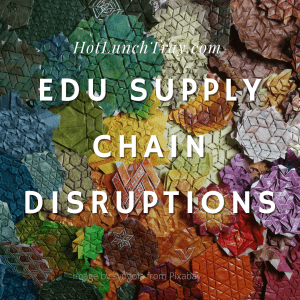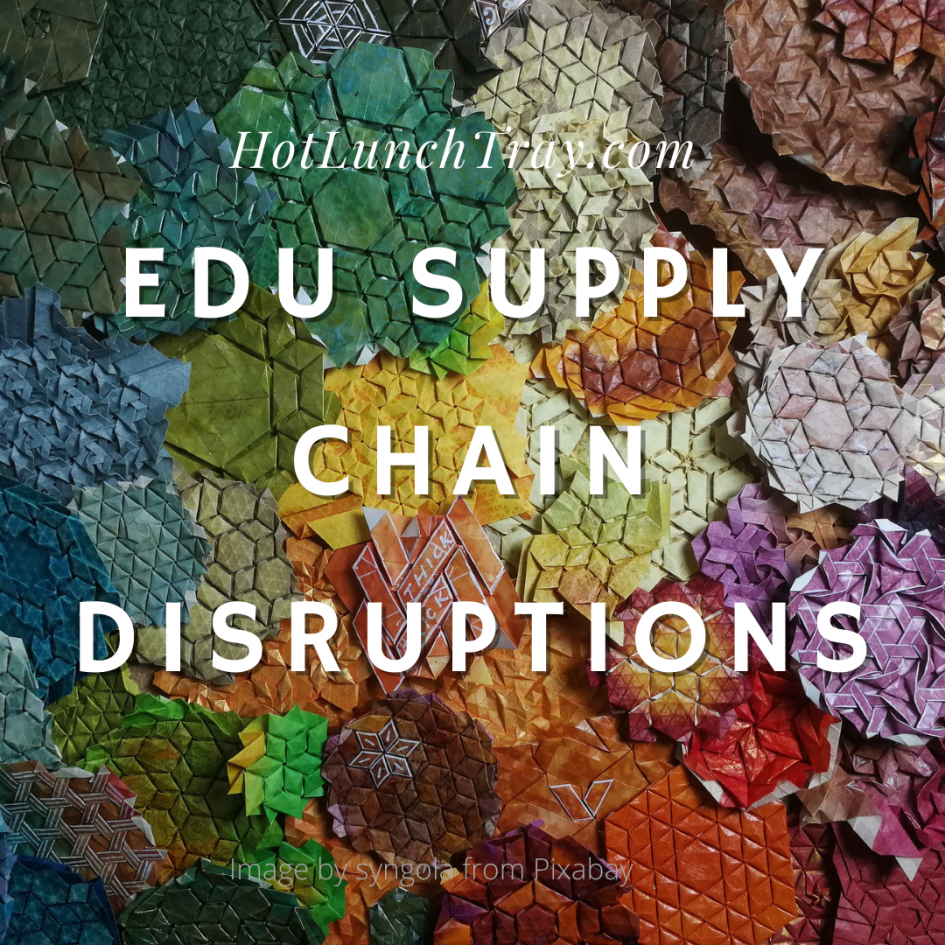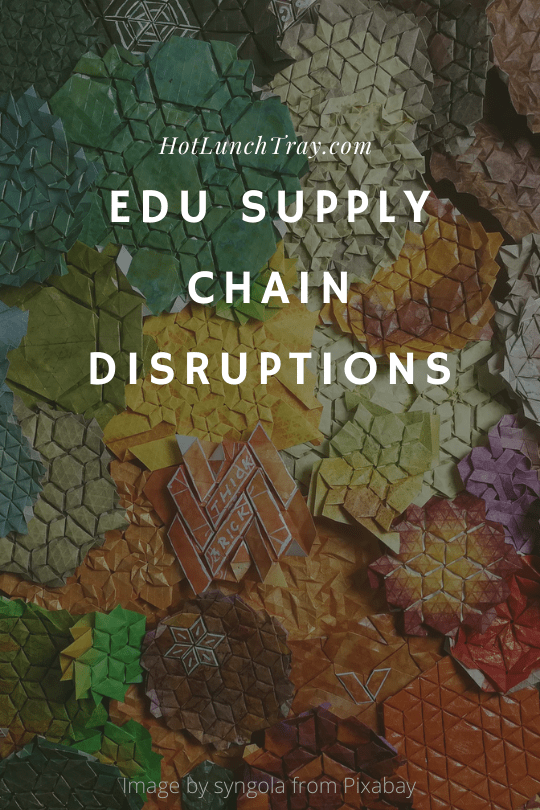Edu Supply Chain Disruptions
The pandemic has disrupted many supply chains. The edu supply chain disruptions will have a wide-reaching impact for years to come. There are really two levels of disruptions, for educators and for students.
Educators
Educators may be too tired to consider right now, but there are some serious disruptions occurring to their professional practice. These disruptions are camouflaged by all the current stressors, but once the pandemic chaos settles some professional lags will become obvious.
Professional Learning
In order to learn, some of the conditions are people need to be ready to learn, oriented to learning, and motivated to learn (Knowles, 1973) which seems unlikely during this COVID-19 period. The interruptions and high-stress of often-changing scenarios at work may leave teachers unable to find themselves in the right frame of mind to learn.
Training
As a prerequisite for using educational technology well in the classroom, training has to be administered. Training often is thought of as less than professional learning, when it is often required before professional learning can take place or is delivered just-in-time with professional learning. Consider the myriad of instructional technology technologies adopted since the onset of the pandemic. Think about the new hires to your school or district who may not have received the typical onboarding with technology. There is a backlog of training.
Planning
“School still needs to go on” seems to be the one constant educators heard no matter the school location. Often the first way to solve teacher shortages appears to be pulling teachers from their planning to cover over classes. The lack of time during the school day impacts the home life balance for educators. Without planning time to do the daily and weekly work teacher stress is heightening and professional learning and training will not be ideal.
Students
It isn’t just educators with disruptions in their edu supply chain. Students have been impacted by COVID-19 and accompanying escalating worries about how long it has been since their school “was normal.” It is possible school may not return to pre-COVID-19 normal. Better use of our time might be to assess where the build-up in edu disruptions has happened during the pandemic school years.
Referrals for Service
Educators rely on proximity to informally assess special services in the earliest grades. When the in-person classroom was first suspended and then disrupted over months the face-to-face element of informal assessment was disrupted. As in-person school resumes these undiagnosed students are now in advanced grades where the talent for informal assessment has not had to be as strong. Some additional resources may need to be dedicated to supporting two-three years worth of referrals in advanced grades at elementary schools.
Decision Fatigue
Even the most advanced educators are exhausted. We see in educators something to protect students against, decision fatigue. As possible, we must make ‘the next thing to do’ obvious for students.
Productivity
Student productivity can be improved by improving the choices adults make in designing online components of their classes. Narrowing the decision for students in an online setting can even mean less work for teachers – win, win! Consider reviewing: K-12 Start Here for Instructional Design, Units of Design, and How to Organize a Module.








2 Pingbacks